For the longest time, I’ve been wondering about a legend I heard involving the Players Club, a New York social club founded by actor Edwin Booth (brother of John Wilkes) in 1888…
…the legendary David Carradine, who you know from such movies and TV shows as Kung-Fu and Kill Bill…
…and Robert Carradine, David’s paternal half-brother (both were sons of actor John Carradine), best known for playing Lewis Skolnick in Revenge of the Nerds.
The popular version of the legend has always gone like this: according to David Carradine, he and his father got in a heated argument one night at the Players Club. “In the pool room…my father and I had a regular brawl about acting. I got so mad I threw a pool ball through a stained glass window and yelled ‘Edwin Booth is dead!'” But everybody got such a kick out of it, I was invited back again.”
However, it appears the argument may have actually been about his half-brother Robert – and a secret.
Robert Carradine was raised by his father’s third wife, Doris Grimshaw, who he had grown up naturally believing to be his mother. Then, at the age of fourteen, he was told the truth: his father’s second wife, Sonia, was his actual biological mother. The secret was known by David, 18 years his senior – and he never approved of keeping it from Robert.
So that fight in the Players Club? According to Robert in an interview on the Howard Stern Show: “There’s a famous incident where David threw a cue ball through the plate glass window at the Players Club in NY…An etched glass window, it’d been there since Booth…He threw a cue ball through it. And it came out later, off the record, the reason he did that was he got in a fight with my dad saying “You’ve got to tell him. If you don’t tell him, I’m going to tell him.”
The Players Club, David Carradine, and the guy from Revenge of the Nerds – could you ask for a more unexpected mix? Whichever version of the story might be true, I had to see the window that was once broken in a fit of rage by the legendary David Carradine, and last week, I finally made an appointment to visit the Players Club.
Even if you’ve never heard of the Players Club, there’s a good chance you’ve seen it in one of the many movies and TV shows it’s been featured in over the years, most recently Boardwalk Empire.
Stepping into the Players Club is like traveling back to the New York of old. The building dates to 1847, when it was built for banker Elihu Townsend. It was renovated in 1888 by Sanford White (of McKim, Mead & White) when famed Shakespearean actor Edwin Booth purchased the property to start his new social club in.
Booth’s goal was to create a club where noted actors of the day could interact with the elite of society, such as bankers, industrialists, and artists. For example, Louis Tiffany was a member…
…and contributed this window featuring the Players logo:
As we headed through the first floor, I found myself standing in front of the one of the club’s most prized possessions…
…a portrait of Edwin Booth by John Singer Sargent:
I’ve seen plenty of portraits in which the eyes seem to follow you, but Booth’s is different; while his eyes remain frozen, the rest of his face seems to turn as you walk across the room. I’m not sure you can get the effect from my picture, but it’s an eerie illusion.
As I was walking through, I noticed this series of pictures featuring the club’s founding members…
…and that Mark Twain was among them (identified, of course, as Samuel Clemens). I mentioned this to my guide, who told me to turn around…
…as I was standing next to Mark Twain’s card table, where he used to gamble with other club members:
For me, coming across these unexpected artifacts is the best part of exploring the Players Club. It’s the sort of place where you’ll enter a room – and there’s a case of swords on the wall!
These were all prop swords used by members in various stage productions over the years (Edwin Booth’s sword is the jeweled one):
Below it is collection of canes used by past members, including some very neat ones topped by jesters:
In another case nearby, a collection of prop daggers…
…and more daggers…
…and above that, various crowns and tiaras:
Other mementos can be found throughout, such as this costume worn by Edwin Booth…
…and various playbills and advertisements dating as far back as the 1800s.
The other thing that amazed me were the paintings.
The Players Club is covered from floor to ceiling in paintings.
No, I mean literally – floor to ceiling:
Most of these are of actors. Here’s former Players Club president Roland Winters…
…who is best known for playing Charlie Chan in the 1940s:
Familiar faces from all areas of the show business world stare at you as you wander through the club…
We then headed upstairs to the second floor library, one of those great mahogany reading rooms that instantly make you feel like you should be smoking a pipe:
Under one of the tables is a copy of Edwin Booth’s apology letter to the American People following his brother’s assassination of Abraham Lincoln, which gives you a sense of the history of the club.
Finally, one of the most impressive rooms is Edwin Booth’s former apartment – which I was not able to see during my tour, unfortunately. Here’s a picture from Time Out NY (click here for the full gallery), It has remained more or less unchanged since Booth lived here:

But back to the mystery – what about Carradine’s broken window?? Where was it, had it been fixed, and did any evidence of his attack remain?
Unfortunately, there was a problem.
The club indeed has a pool room on the lower level, adjacent to the bar:
However, there are no stained glass windows for Carradine to have thrown a cue ball through – just standard windows looking out on Gramercy Park.
Does this mean the story is fake? Not necessarily.
The final room we entered was the club’s Dining Room, which features a small stage where readings and performances are held:
And there, adorning the walls, are a pair of stained glass windows. The first features actor Richard Mansfield portraing King Richard III in 1889…
The other, actor David Garrick portraying Richard III in 1741 (in fact, the Players Club is said to have been based on the Garrick Club, a gentelmen’s club in London for actors):
And if you look closely, you can see what appears to be a repaired break in the Garrick window:
Could this be it? The other window features what appears to be another repair, although smaller:
Were these once located downstairs in the bar? Or had Carradine carried the cue ball upstairs for some reason? Or perhaps the pool tables were once in this room?
No one I spoke to at the club had heard the Carradine story before, so for now, it remains a mystery – which, in a way, seems not unexpected for a chapter in the life of David Carradine. And at the very least, it gave me an excuse to present this beautiful property to you all.
Hope you’ve enjoyed! The Players Club is open to movie, TV and photo shoots (with an appropriate budget!). Send me an email for information.
-SCOUT


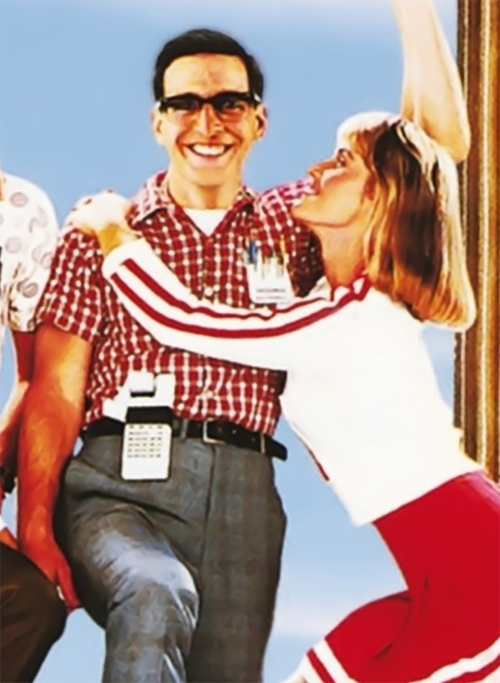




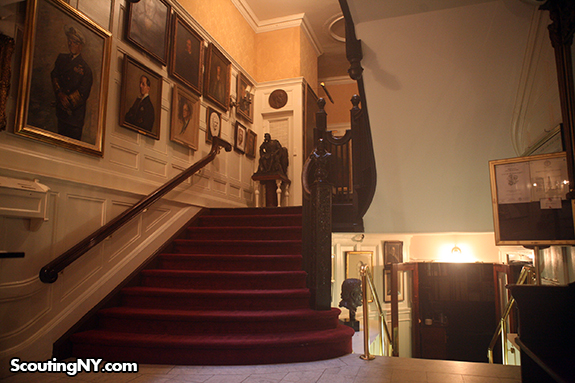
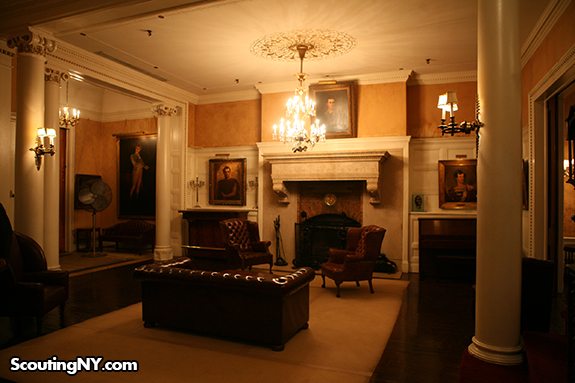
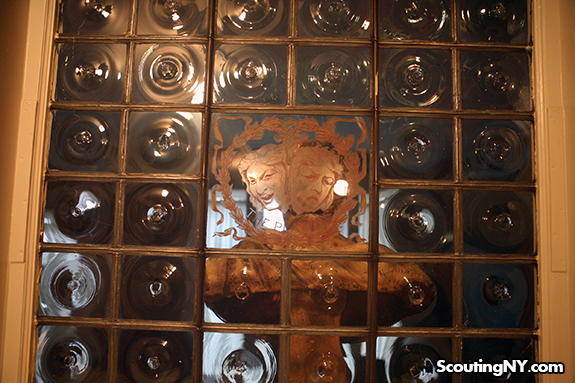
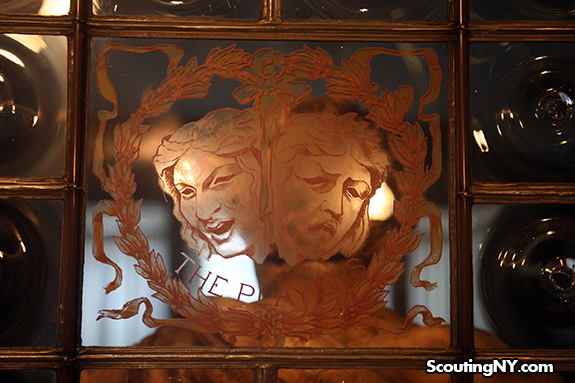




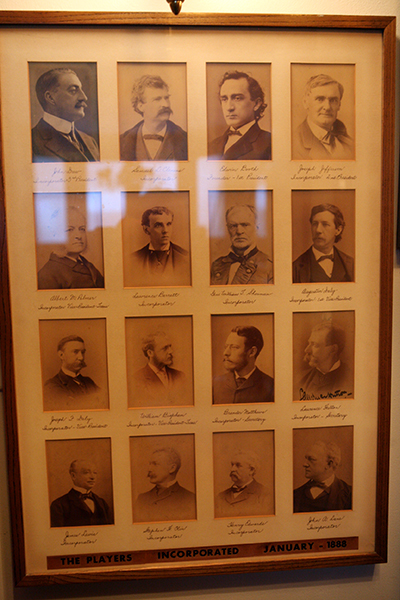
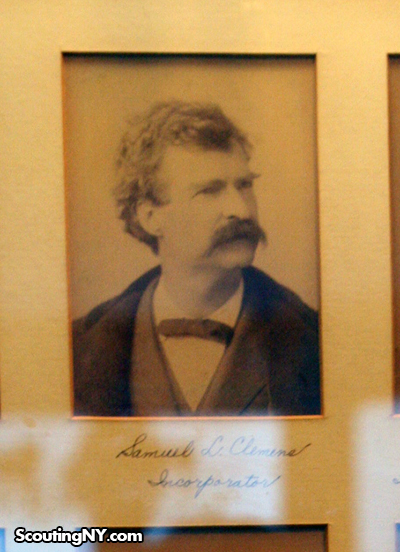
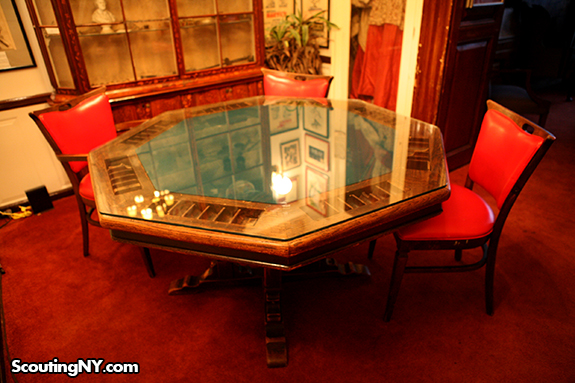
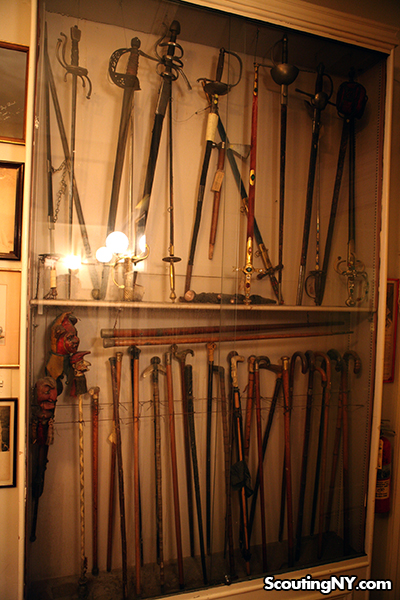
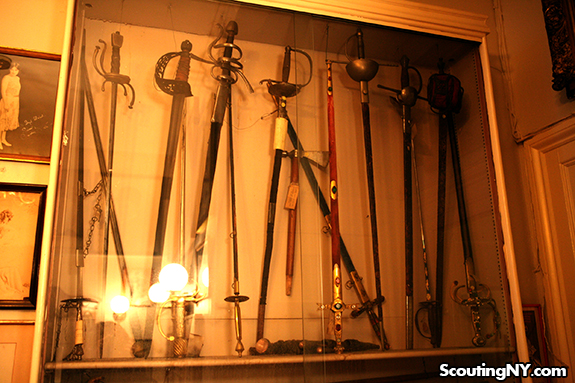

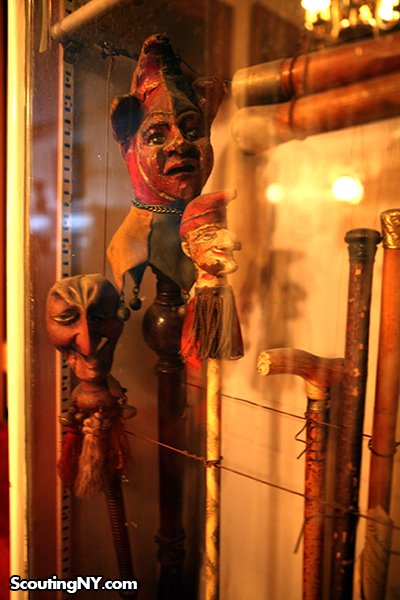
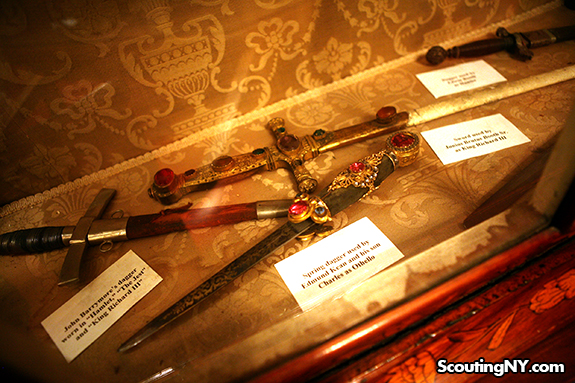
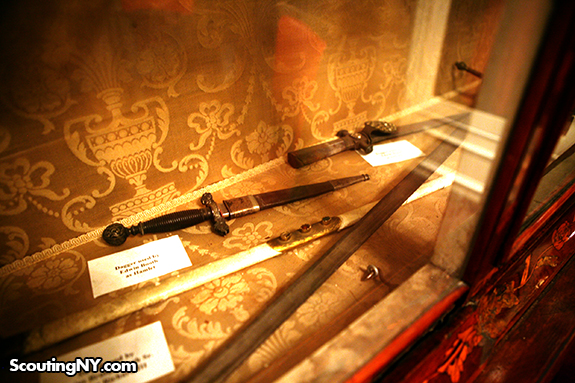
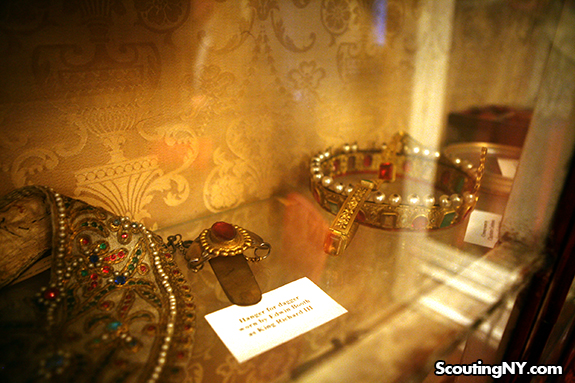
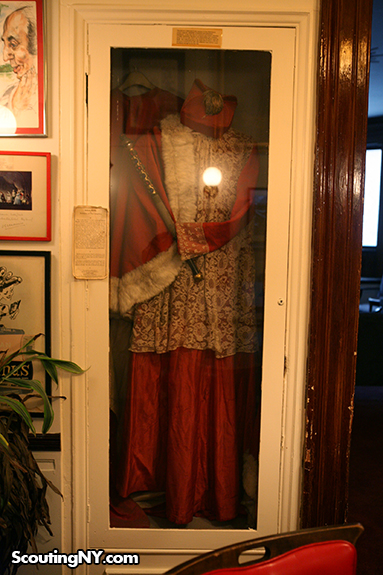
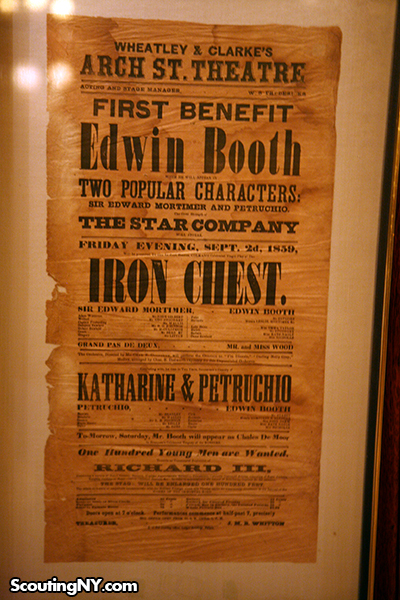
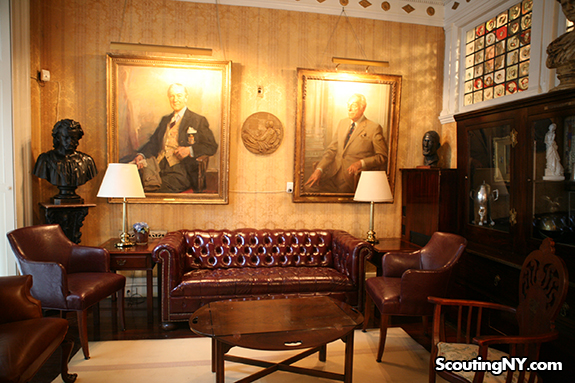
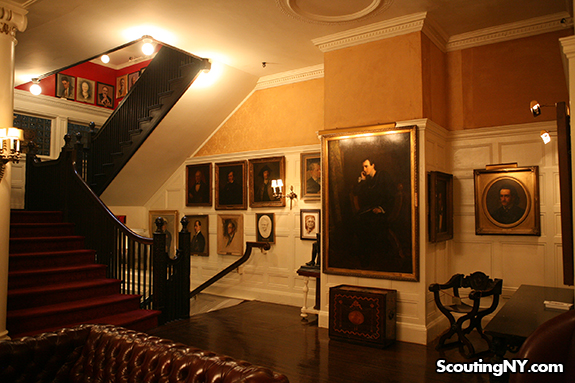
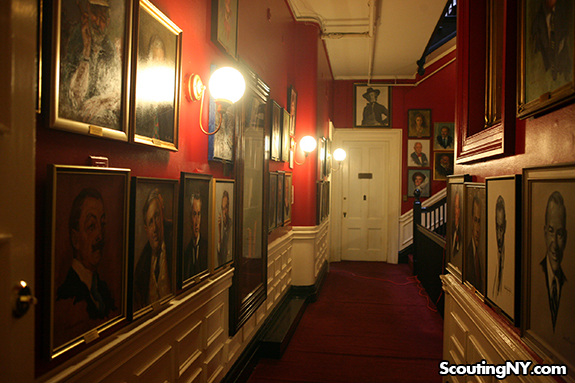
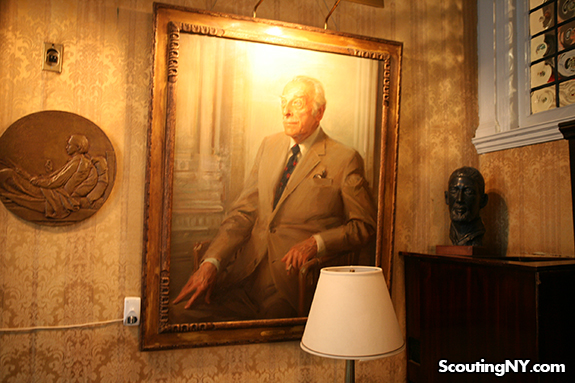
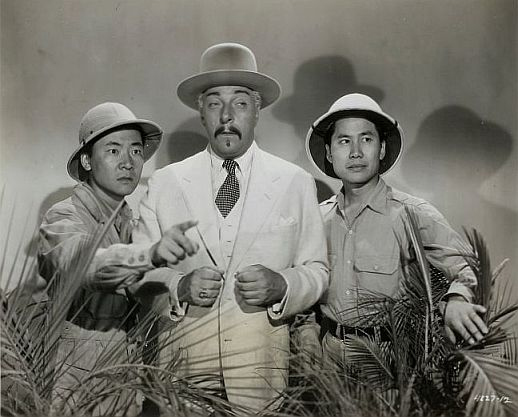
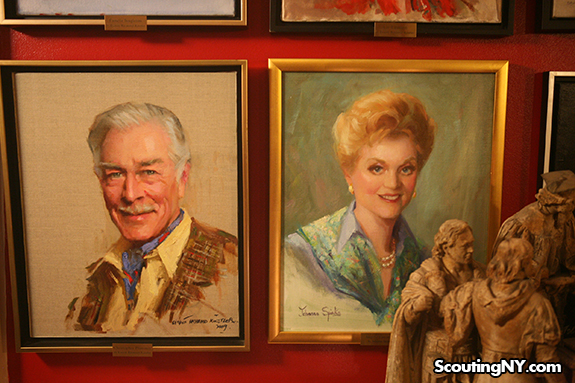
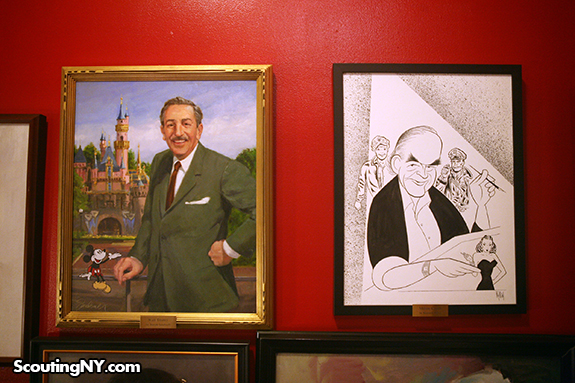
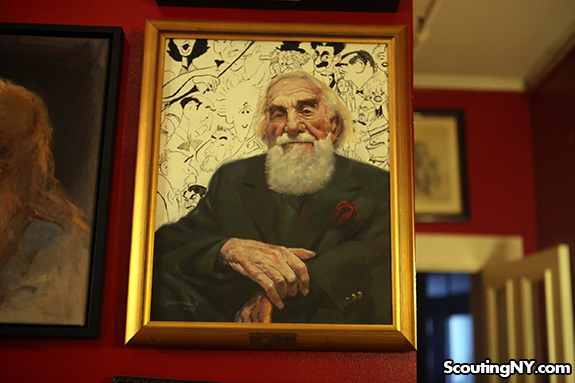
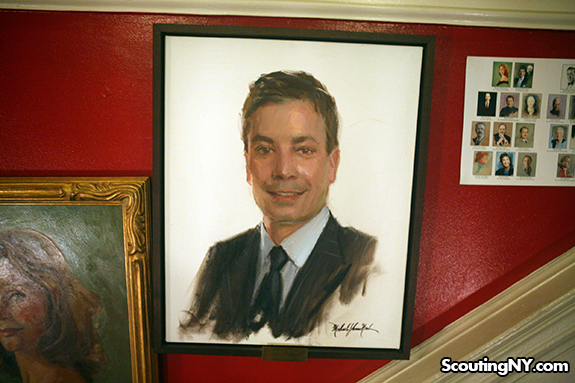
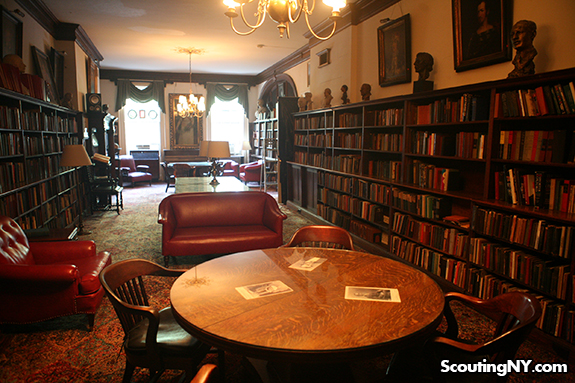
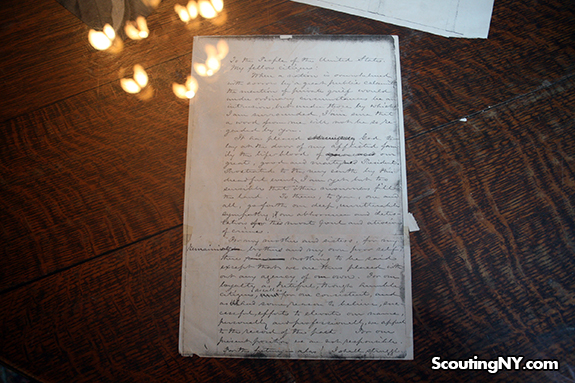
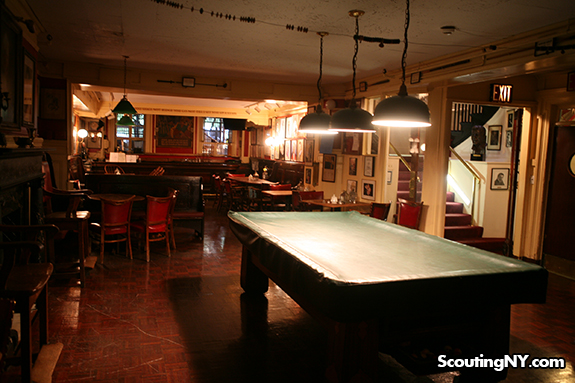
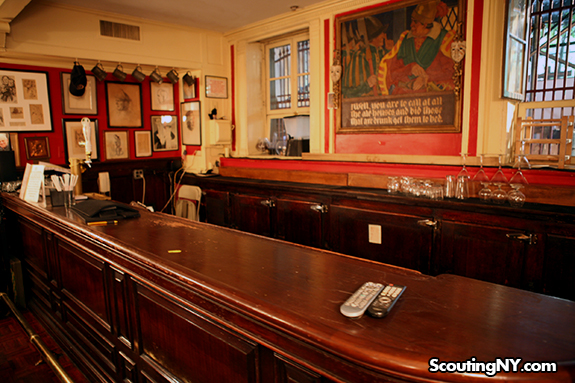
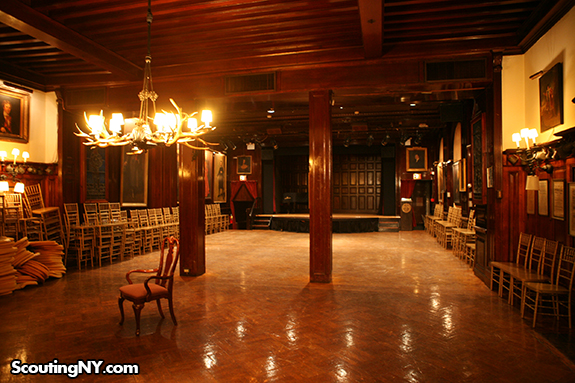
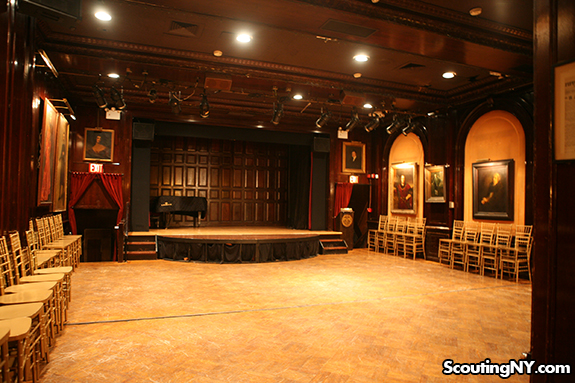
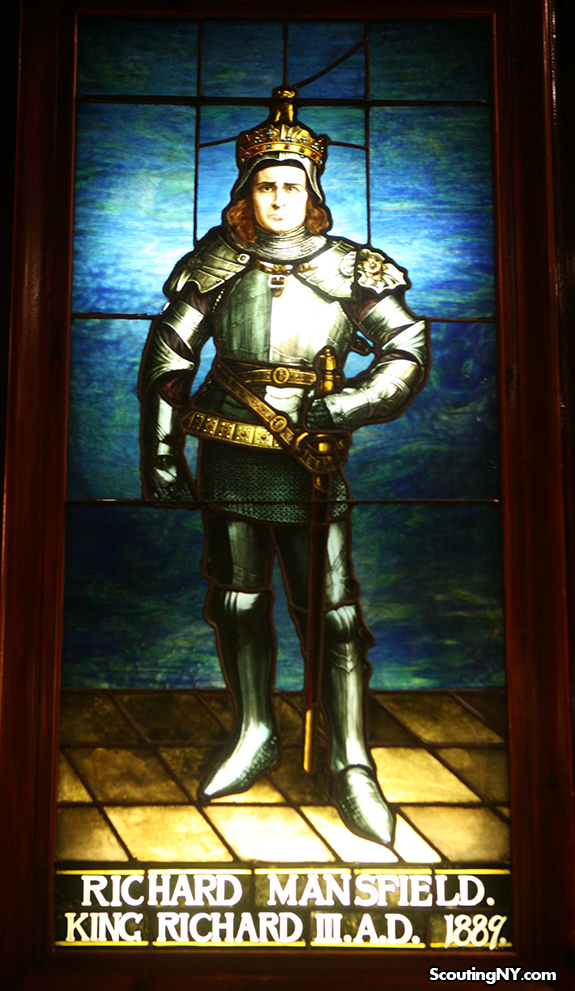
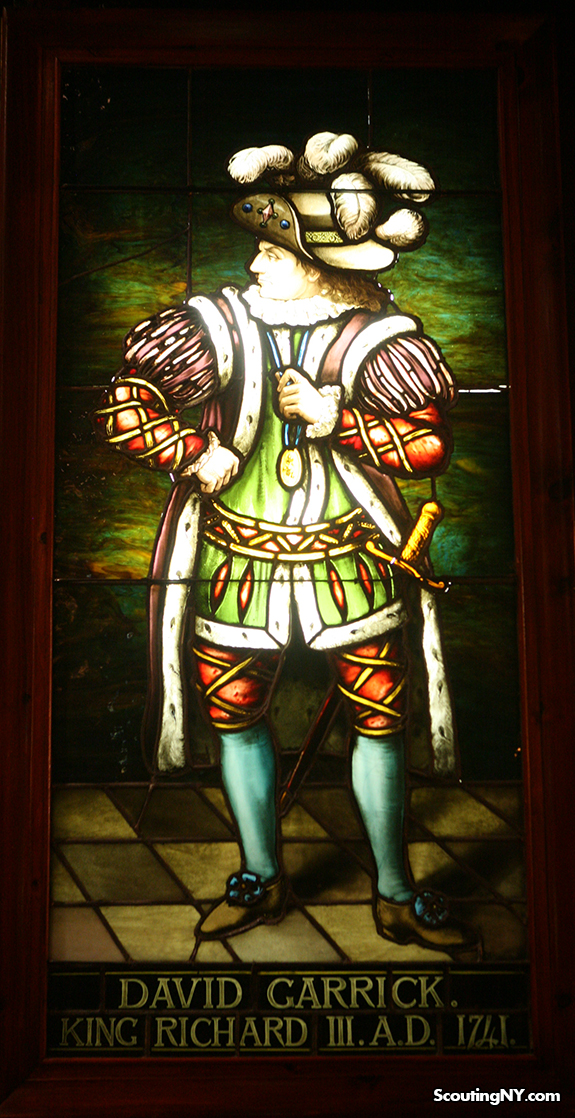

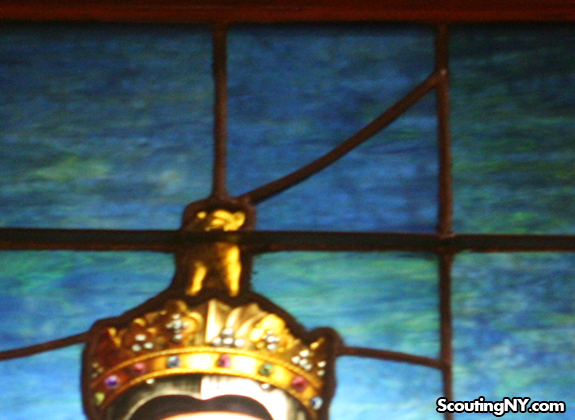

Another fantastic post. I love the detail you go into.
I remember seeing a piece about the Player’s Club on a show called Secrets of New York. Your blog and ‘Secrets’ are two of my favorites. Now that I live in California, I come to ScoutingNY to get my dose of New York whenever I miss it.
Keep up the fantastic work!
One word: “Wow!”
I was invited to the Players Club about 25 years ago; it was falling apart. So good to see it looking restored!
Edwin booth, Samuel Clemens, Jimmy Kimmel…
Jimmy FALLON!
I’m dumb.
Jimmy Kimmel would have been better.
Is it still an actual club? Or is it just another tourist trap now?
One of the best blog posts I have ever had the pleasure of viewing – thank you thank you!
The Players Club site actually has this about the Booth portrait:
“John Singer Sargent did not paint Edwin Booth standing in front of the fireplace in the Great Hall. Booth posed first and the background was added in later. Sargent then repainted Booth’s face because the subject didn’t think the portrait looked like him.”
Regardless, still an exquisite piece.
Nice to see the Line King in there. Sam Clemen’s card table and the one in the Algonquin have to be the luckiest ones in the city because of the quality of the conversations that went down around them. Thank you for giving us a peek into another interesting corner of this wonderful city.
It was great to see, these great photos of the club. My father was a member from 1982-2000. Because of that, I got to visit the club alot and never heard this story or saw a broken window.
The Players Club has had a number of problems over the last number of years. But things are looking good for the club, with new staff in place.
I so want it to be the pane that David Garrick is glowering at. Would’ve looked brilliant just after the moment it happened.
Can you get information on old members?